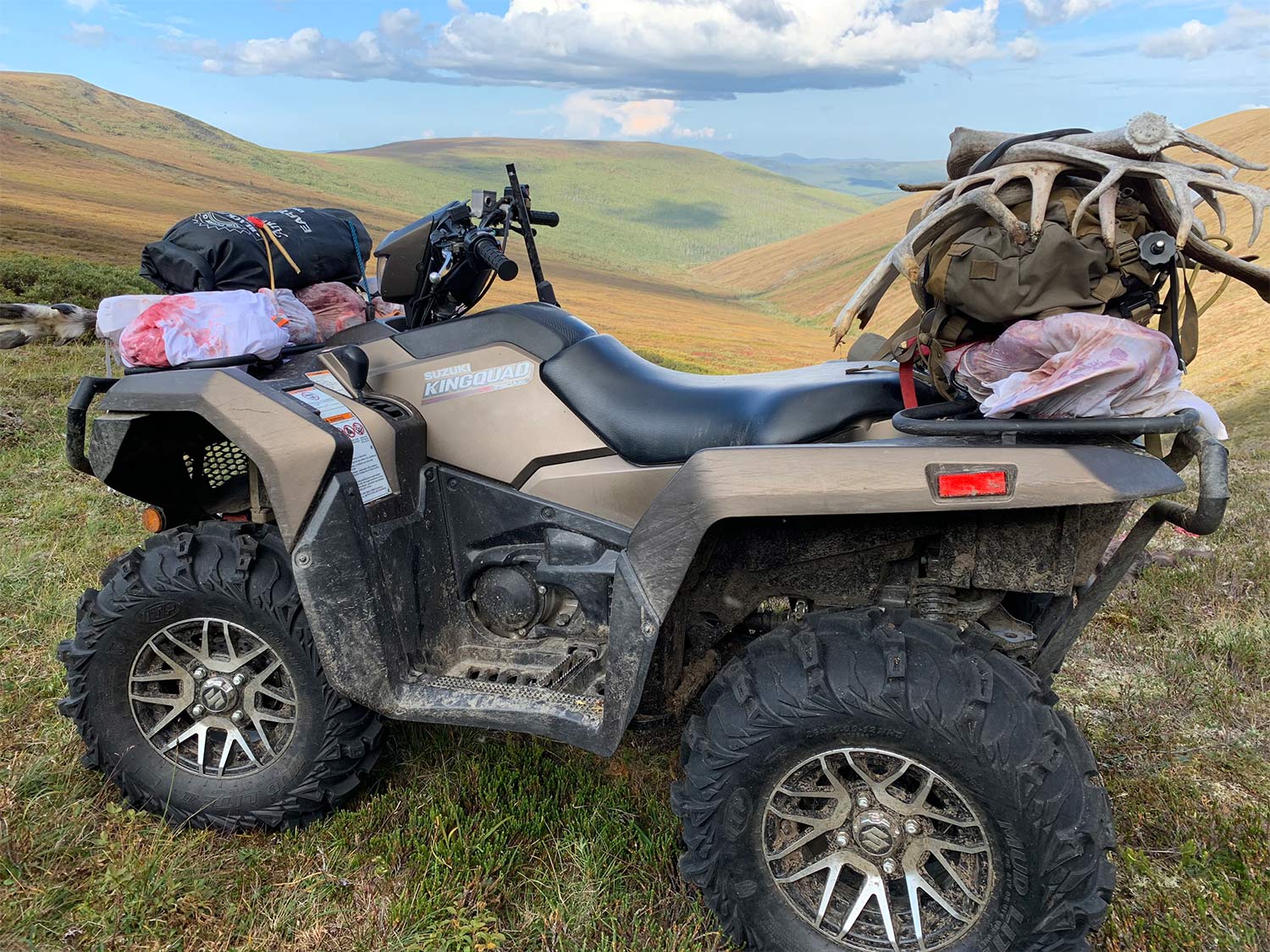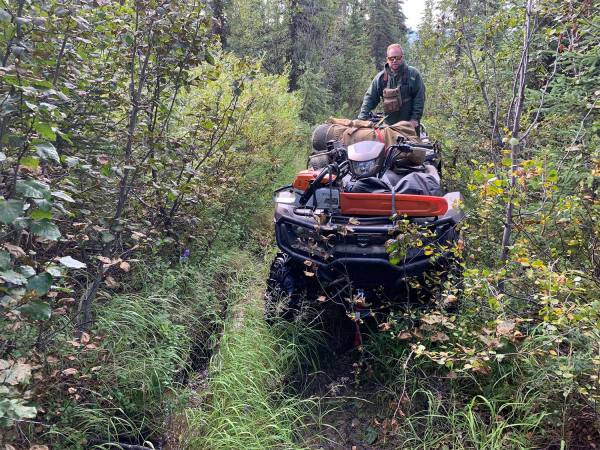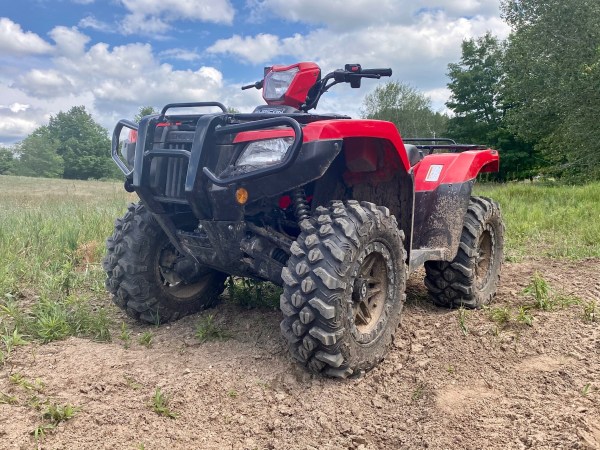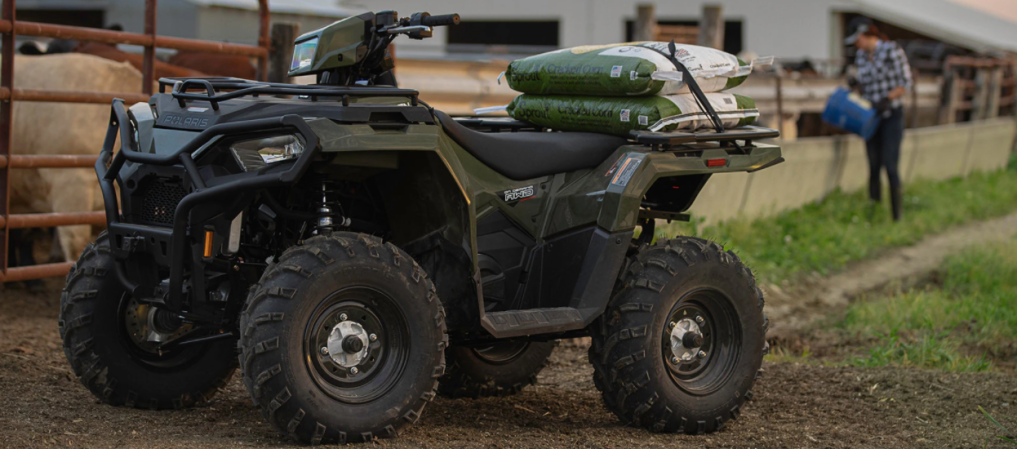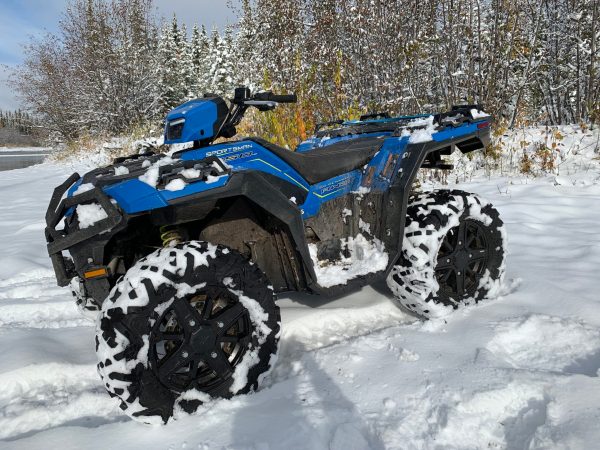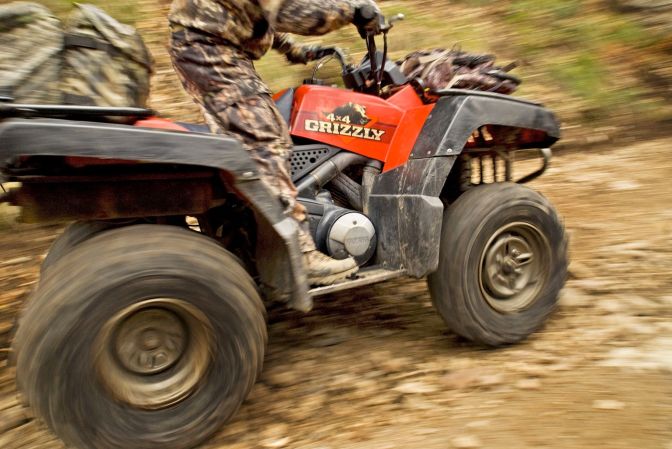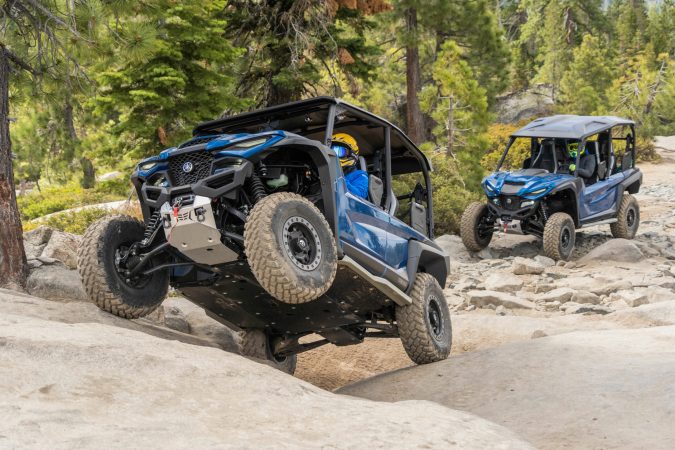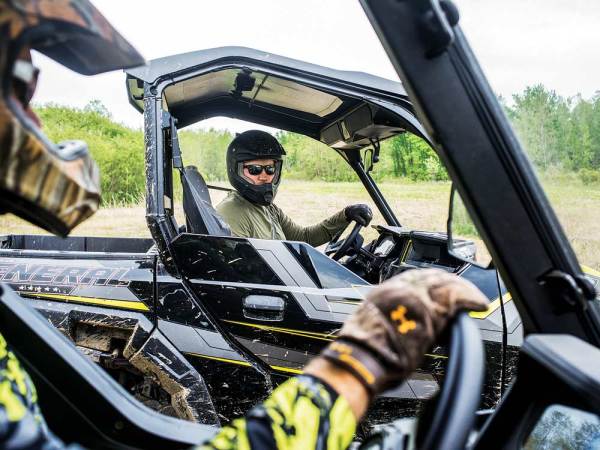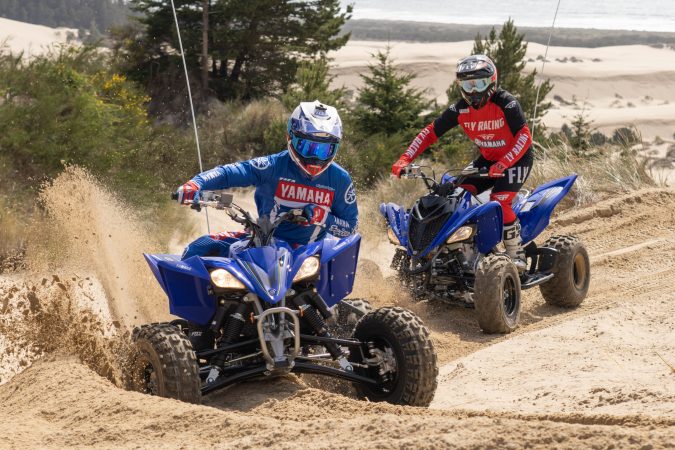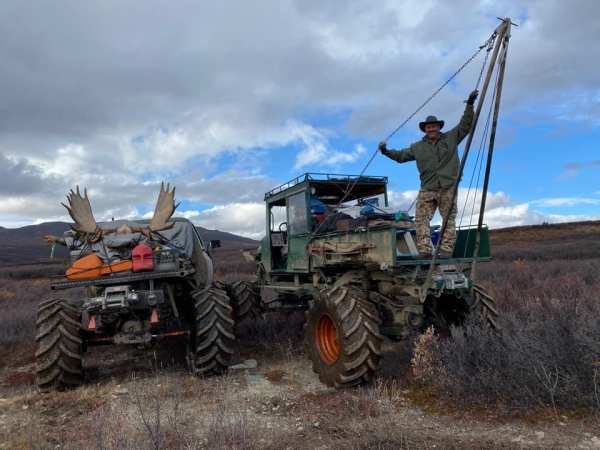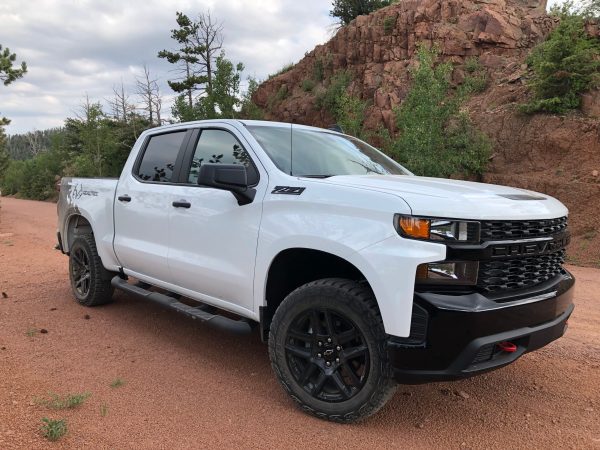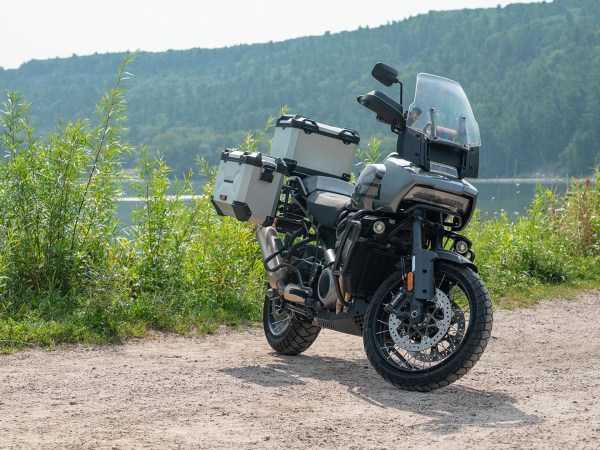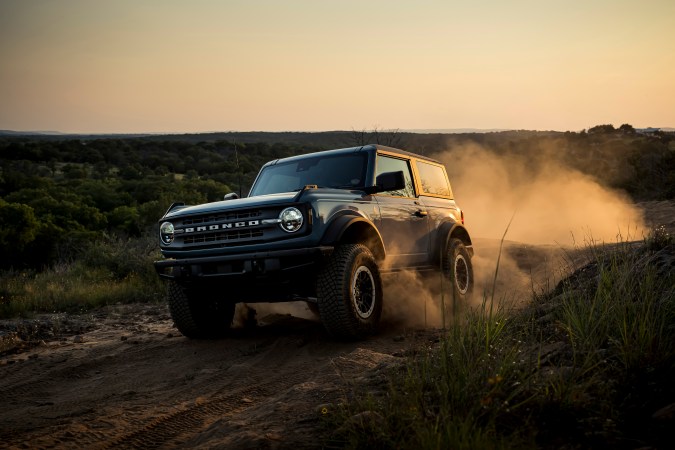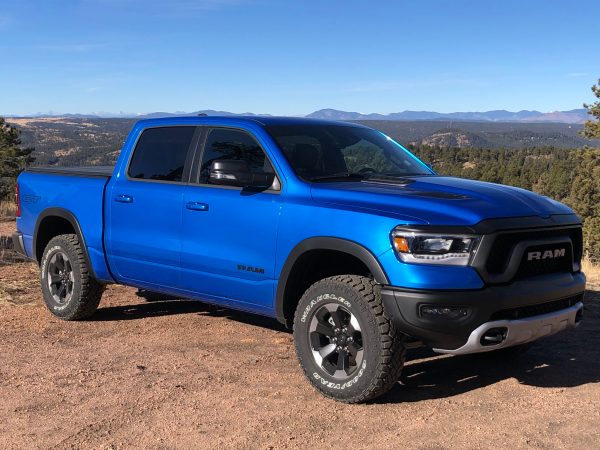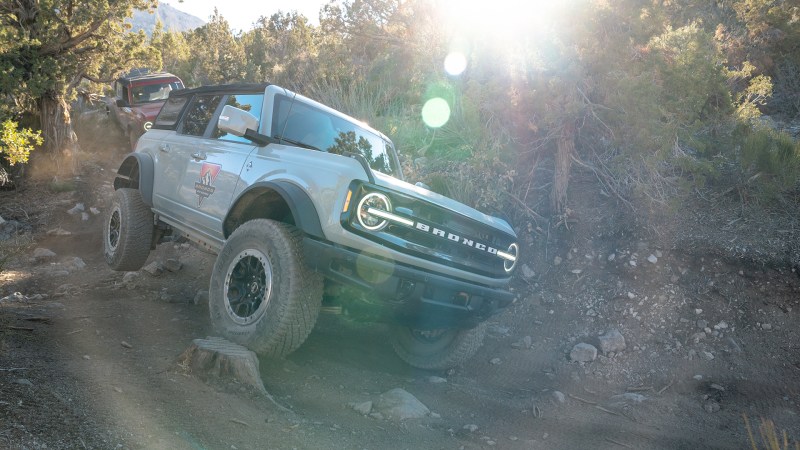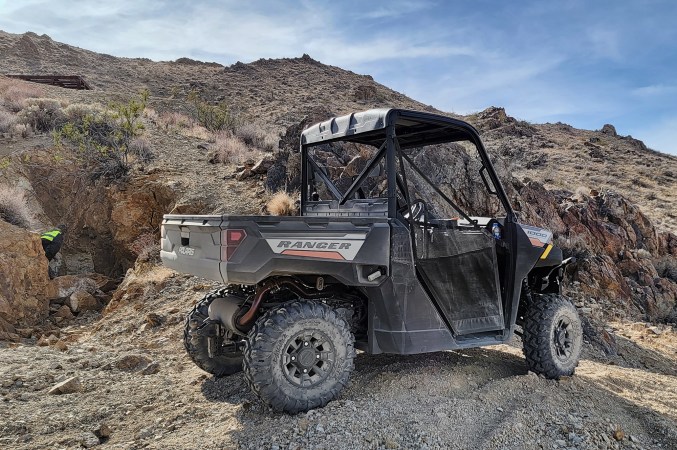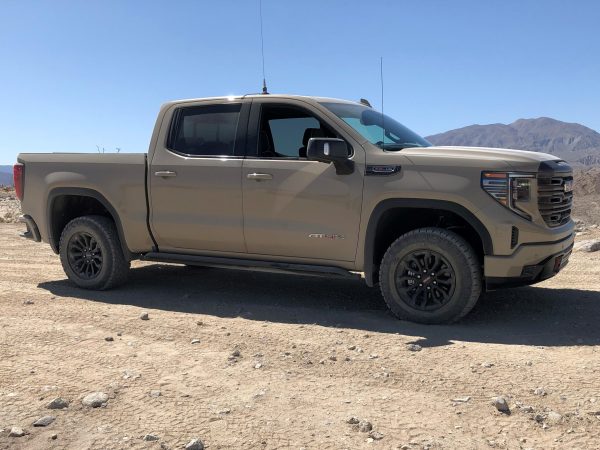We may earn revenue from the products available on this page and participate in affiliate programs. Learn More ›
This is how your average ATV or UTV magazine review works: The writer gets an ATV/UTV, and runs it through a test course and scores it on certain criteria. Your average test course will usually have a few mud holes, a log, and a small rock pile to drive over. If the test is done thoroughly, you can get an idea as to how the machine stacks up.
But for many publications, conducting a practical and honest review of an ATV or UTV is difficult, especially when considering its value to outdoorsmen and women. Because to really get to know one of these machines, you have to take it into the backcountry for days and weeks on end, and learn how it performs. For a truly informative evaluation, a machine needs to be run hard in rugged terrain—not driven a few times on course that was setup to mimic the kind of tasks you need a 4×4 to accomplish. It’s not uncommon for a machine to pass such a test with flying colors, only to have less-than-ideal issues crop up during everyday use.
This spring, just days before COVID-19 hit Alaska, I picked up a new Suzuki King Quad 750 AXI with the Rugged Package add-on. I had the chance to use it for the summer and fall hunting seasons here in interior Alaska. This was an ideal opportunity, because I would be able to see see if it could do everything I needed it to do, and how well it could do it. We often ask a lot of our machines here in Alaska. I find that just about anywhere I go, I’m right on the edge of breaking and destroying equipment. In fact, if my machine makes it through a trip unscathed, I consider it a major win.
I crashed the Suzuki through burnt timber stands, chest-high brush, thigh-deep mudholes, tundra, steep, rocky hillsides, tussocks, swamps, gravel and glacial creeks I drove it across dicey log bridges, in and out of the back of trucks, and the front of jet boats. In fact, there have been multiple occasions this year when the folks at Suzuki probably would have cringed had they known what I was doing with their ATV. I often wondered how I would explain to them what “normal wear and tear” means in Alaska.
That said, I truly need and expect an ATV to perform in rugged country, and if problems arise, I’m going to quickly find them. I won’t bore you with too much talk of specifications and features in this review; you can find that on any dealer pamphlet. For a practical end user, there are some pretty cool features on this machine. I’ll share what I liked and what I didn’t, and how well it works in practical applications. I received the 4×4 stock from factory, but did add a Warn VRX 25 winch and aftermarket tires, two accessories you can’t do without here in Alaska.
Suzuki’s Rugged Package Add-On
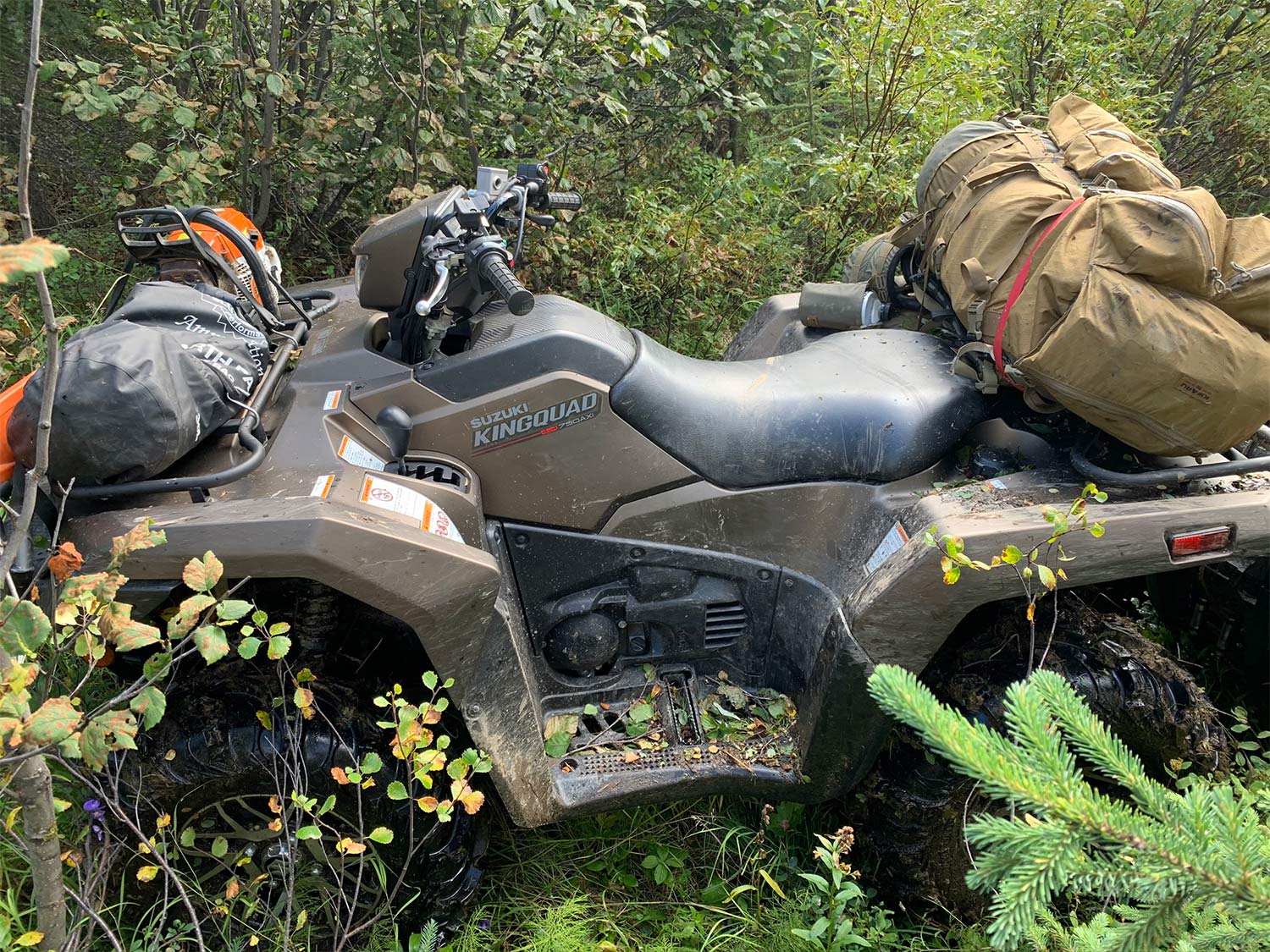
This package is a factory add-on that consists of heavy tubing brush guards/bumpers on the front and back of the machine, as well as an LED light bar on the front, with a rocker switch on the handlebars and protective filters/covers for the light itself.
I found the brush bumpers to be well-worth having. If you’re using an ATV to its full potential, you’re going to be crashing through some brush or driving over small trees sooner or later, and the tubing does a great job of protecting the plastic fenders, headlights, and other parts that you don’t want to see crushed. The design of the bumpers helps funnel brush, branches, and saplings underneath the wheeler, and the rear bumpers keep brush from damaging the back fenders when it springs back up. At the very least, you will eventually hit a big tree on the front or back (which I did), and the bumpers do a great job of preventing body damage.
The light bar is extremely handy, especially if you’re doing much after-dark riding or need a flood light. After a couple months, I did notice that the light bar was bleeding power, with the LEDs not completely shutting off even when the switch was off. I suspect that it was simply a bad switch. Since I discovered this right before a hunting trip, I just disconnected the light from the battery. I’m guessing that when I do take the time to get it inspected by the dealer, it should be a simple fix.
Body
In addition to the protection that the Rugged Package offers, the undercarriage of the King Quad is well thought out to provide protection from rough terrain. The entire center of the machine is a vented skid plate, and the CV axles and boots are well protected. While plowing through brush, some of the worst hazards are dead sticks, limbs, and small, broken-off trees that can jam into the undercarriage and tear CV boots, rip off hoses, puncture radiators, and more. Obviously, there is a limit to what a machine can reasonably be protected from, but if this design had a significant weak spot, I would have found it. In all the rough miles I put on it, I only ripped off one internal fender, when it was caught on a stick in the ground. It was quickly replaced with a couple spare plastic fender rivets, and proved none the worse for wear. The positioning of the radiator is also high and far back enough to prevent being speared by branches. It’s shielded from excess mud by a rubber flap that sits below it. If you get too much mud on your radiator, you will have overheating issues.
Suspension
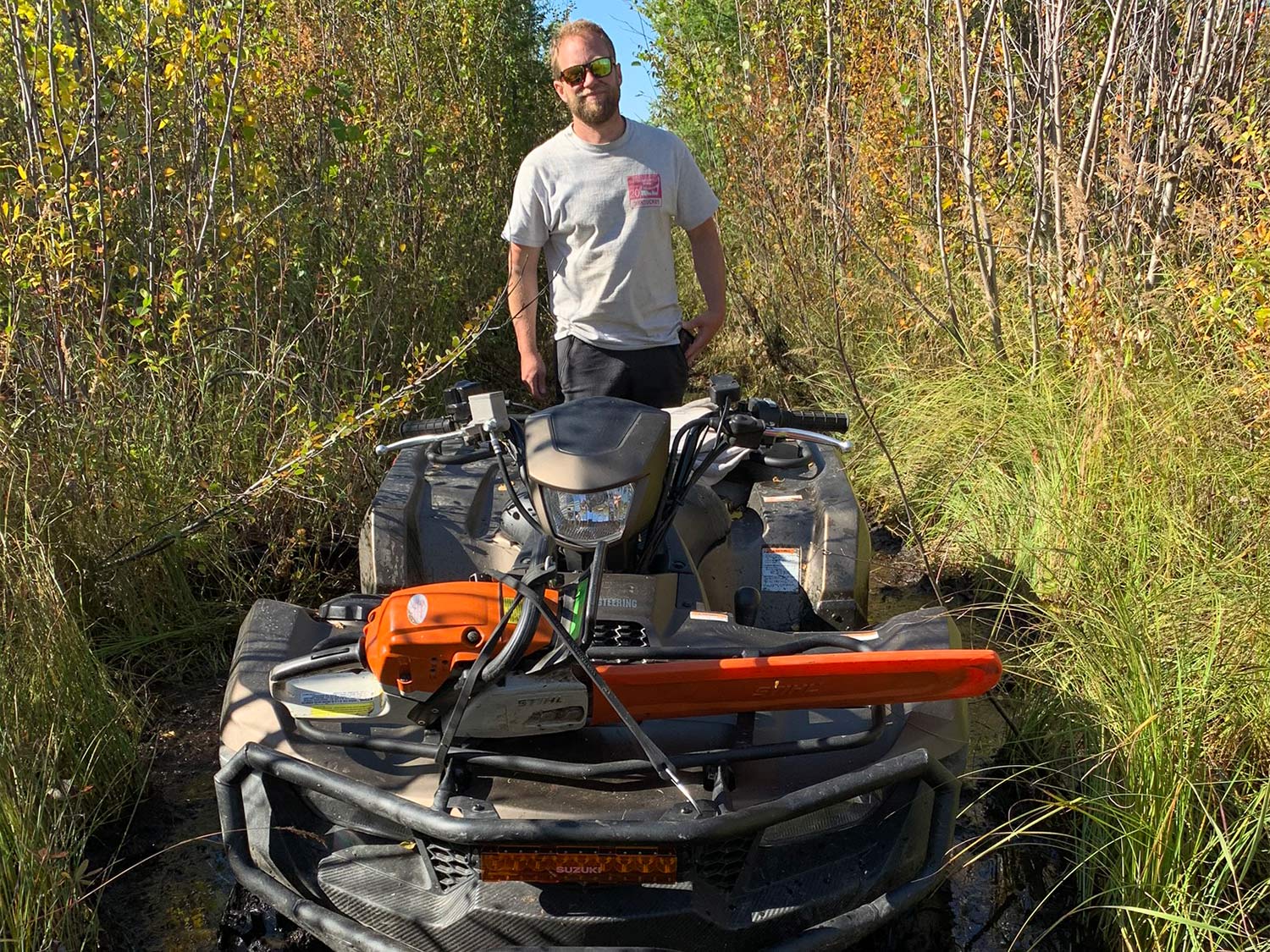
This ATV has an easily-adjustable, independent front and rear suspension that makes for a very comfortable ride on rough terrain. You want to take some time to fine-tune the pre-loads on each shock, as this will greatly affect handling, especially on uneven ground. I initially had set the pre-load very high, and found it to be pretty tippy, especially on side-hill trails, but once I softened the shocks back up, it improved significantly. When set correctly, it’s pretty incredible what you can drive over without feeling like you’re sitting on a paint shaker.
Racks and Storage
One of the many things I really like about this machine are its metal tubing racks. I despise plastic front and back gear racks for a couple of reasons. They tend to be more easily broken and more difficult to strap a variety of cargo to, whether it’s a backpack, meat, chainsaws, or other accessories. The plastic racks also seem to be designed to use a limited range of proprietary accessories, rather than accepting generic aftermarket accessories. The King Quad 750AXI has well-built tubing racks, and the front rack provides a significant amount of space for strapping down gear. On one trip, I came out with a backpack full of gear and a whole sheep on the back rack, a chainsaw, five gallons of gas, and a bag of extra clothes and gear on the front rack. Although they are admittedly old-school, tubing racks like this are the only way to go for this kind of work. They’re tough and versatile, and just about any aftermarket gear-mounting hardware will work with them.
This machine also comes with three separate storage compartments. It has two rear compartments that are not water-tight, and one dry storage compartment to the right of the steering column. This dry storage is handy, especially for charging your phone, GPS, or other devices as you ride because it’s right next to the 12V charging outlet. Ideally, I would rather have a slightly larger, single rear storage compartment, as the two individual compartments won’t fit the tire repair kit I like to carry, but it’s not a deal breaker.
Read Next: How to Build an ATV Tough Enough for Alaska’s Backcountry
Electronics
This model’s battery and many of the electronic modules are located directly under the seat for quick access. The battery is especially easy to spot and keep clean. If you need to charge, replace, or make connections to the battery, you simply remove the seat—it’s right there. Some of the other components make it a little bit busy under that seat, but I still managed to find room to mount the solenoid for my winch. All the components and relays stay free of mud and debris, and are simple to access and replace.
Tires
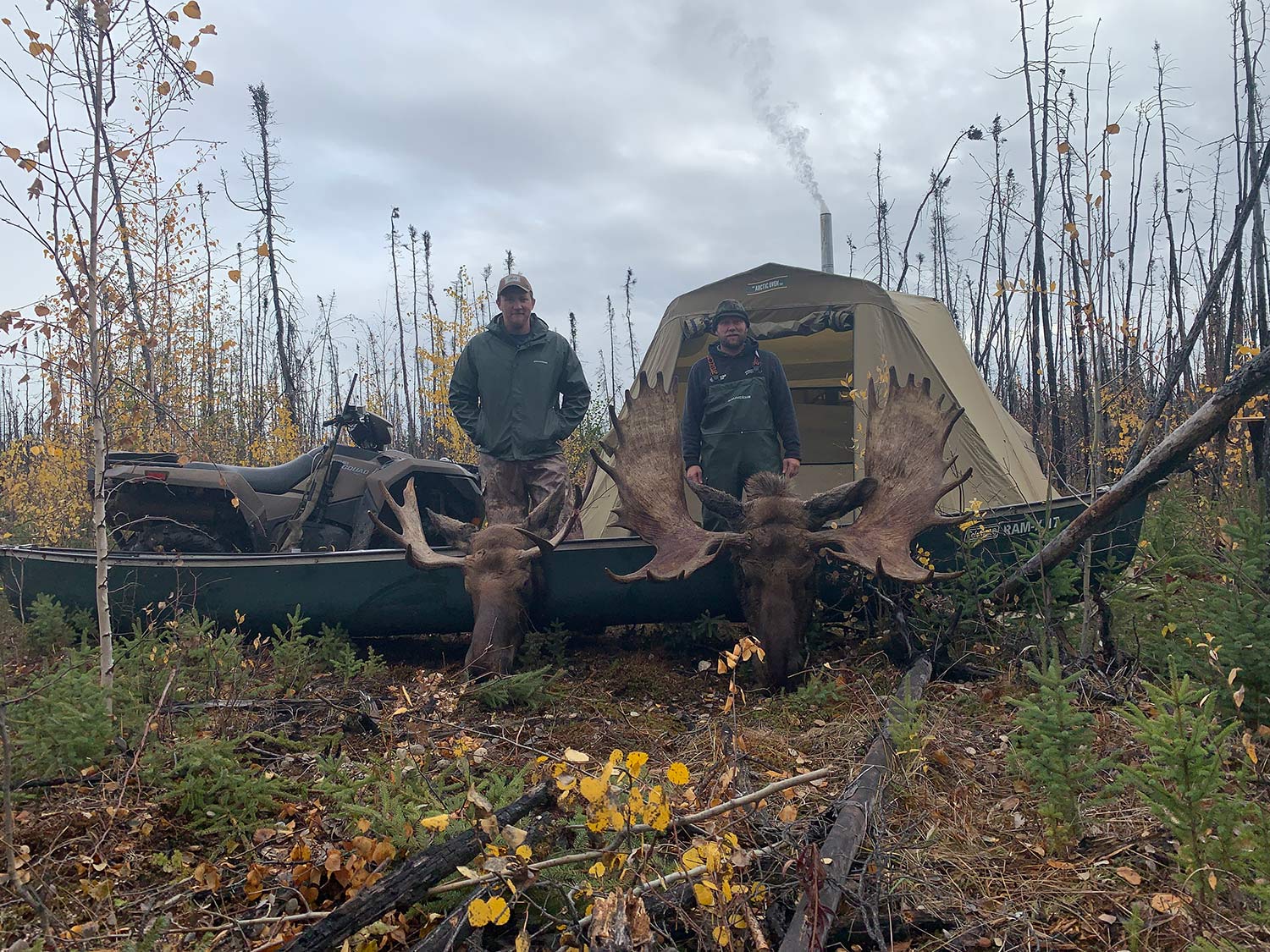
This King Quad comes with stock 25-inch tires that are bigger and better-lugged than the factory tires you’ll find on many machines, and will work fine for most applications. As one buddy said, however, “Those are just going to piss you off.” That’s not a slight against the machine or Suzuki; it’s just that stock tires are generally not capable of preforming the way I need them to in the backcountry. If you’re going to use your four-wheeler hard, especially here in Alaska, a good set of aftermarket tires will allow you to access much more of your machine’s potential, especially a heavier, and more powerful machine like the King Quad. With stock tires, you’re leaving a lot of power on the table because you’ll just spin your wheels quicker with less-aggressive tires. I really like the ITP Mud Lite II tires, but any good tire will make a huge difference.
Brakes
Many ATVs only have a hand brake on the left handlebar for the front brakes, and a foot brake for the rear. This King Quad has left and right hand brakes, and discs on both front wheels (many ATVs only have one front brake disc). At a certain point, brakes are brakes, but having another hand brake option proved really useful many times over on steep hills, while loading into a boat, and other situations where I had to be off the machine and couldn’t practically reach the left brake.
Towing Hardware
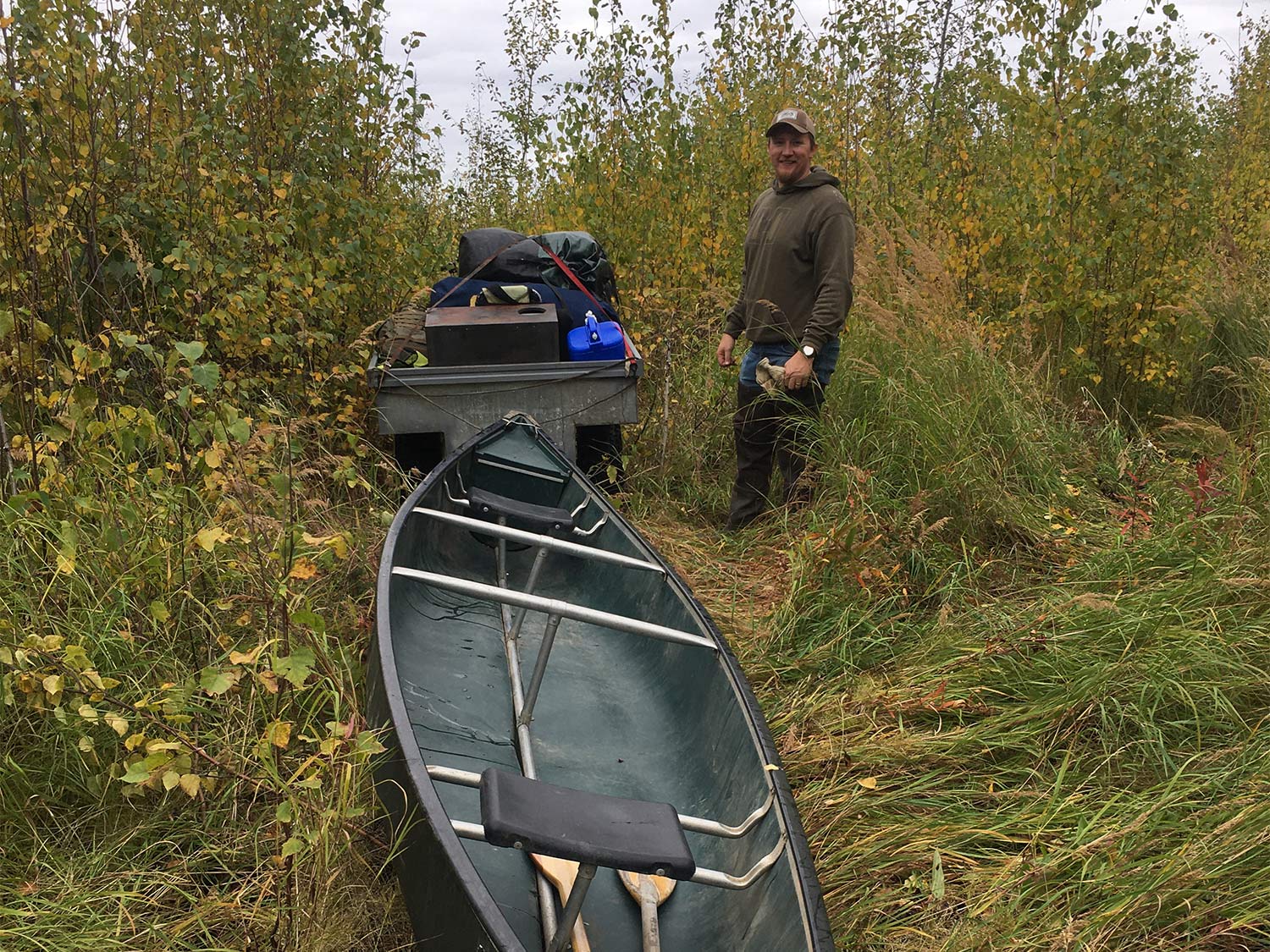
It’s worth noting that this King Quad features a full-size 2-inch hitch receiver that is well reinforced. Many other ATVs use a fairly wimpy 1-inch hitch receiver, and I know more than one guy who has ripped the hitch out of the receiver on some of these machines while towing a heavy meat trailer. If, for some reason, the King Quad hitch receiver gets damaged, it appears to be mounted to the frame in such a manner that it could easily be replaced without having to do any custom fabricating.
Power Steering and Differential Lock
Power steering has become pretty much the norm on ATVs for good reason. At the end of a day of riding in really rough terrain, it’s typically your arms and shoulders that hurt most, and power steering greatly reduces the difficulty in handling through that kind of country. It’s not going to eliminate having to crank on the handlebars in really rough terrain, but it does help, and makes steering effortless during more gentle riding. After getting used to the power steering on the King Quad, it was a rude awakening when I jumped back on my older Polaris that doesn’t have it.
Although it wouldn’t be a make-or-break feature for most users, the differential lock is a pretty cool feature for this machine. If you find yourself stuck, you’ll sometimes notice that one of your wheels spins and the other doesn’t. Engaging the differential lock will make both left and right wheels spin, even if one is slipping. I honestly wasn’t sure how useful this would be for me, but over the course of hunting trips for Dall sheep, caribou, and moose, I probably had 15 or so instances where I was stuck, and simply locking the differential allowed me to pop right out of the hole. You don’t want to leave the differential locked when you don’t need it, and when it’s engaged, an indicator light turns on to remind you.
Riding and Utility
Ultimately, the measure of a good machine is if it does what it’s designed to do, if it holds up over time, and how much or little you find yourself cussing at it along the way. I used the King Quad hard and didn’t hold back. If I’m going to use an ATV, I need it to deliver; if it’s not up to the task, I don’t have any use for it. I was incredibly pleased with just about everything on this King Quad, and there’s very little about it that I haven’t liked. There are bigger machines, but several I’ve ridden have a more sluggish throttle response and tend to have more belt slippage. This 750 is incredibly powerful, and with good tires and in low gear, a couple healthy bumps to the throttle would push it through just about anything. If there was something the tires could grab, they would. In fact, the King Quad would really only get “stuck” when high centered, and I don’t recall any belt slippage at all, even when towing a heavy load through big tussocks. I never needed more power when climbing hills or when loaded to the gills with gear and meat. I even used it to yank a big bull moose, weighing roughly 1,500 pounds, out of a nasty water hole to a better spot for butchering when my winch couldn’t get the job done. It dragged another bull out of a hellacious swamp with ease. It also towed a trailer full of meat from two moose, a canoe loaded with gear, and my hunting buddy siting on the back rack—no problem.
Aside from a few scuffs on the sides of the fenders, the King Quad came out unscathed (a miracle). Perhaps the most telling result of the rugged testing I’ve put the King Quad through? I don’t want to send it back.

